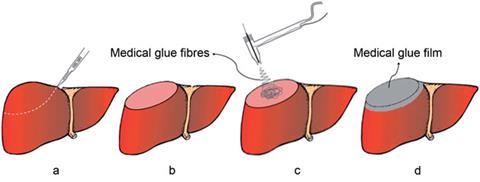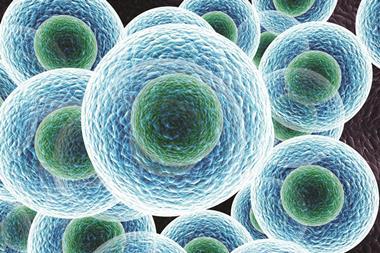
Cyanoacrylates, which are also found in superglue, can be applied to wounds to prevent blood loss. However, daubing glue onto wounds can result in serious bleeding through cracks in the glue film. Spraying glue onto wound sites ensures an even coverage but can lead to complications like tissue adhesion.
Kai Jiang, a doctor and professor of surgery at the Institute & Hospital of Hepatobiliary Surgery in Beijing and Yun-Ze Long, a nanotechnology expert at Qingdao University, have combined their expertise and modified an electrospinning technique with an air pump to blow electrospun glue fibres onto a wound site to form an adhesive film for use in surgery.Jiang, Long and their team tested their approach on a pig liver resection, a procedure where parts of the liver are surgically removed, exposing a large wound. The airflow cleans the wound before the electrospinning whips a charged jet of a cyanoacrylate polymer solution into ultrathin fibres. These fibres form a nanostructured web which acts as a leak-proof barrier to avert further bleeding.

John Lee, a doctor and specialist in internal medicine and technology at the National Taiwan University Hospital, is impressed by the live pig liver resection results. However, ‘there are still several challenges in translating the technique into clinical practice such as ensuring consistent quality and quantity of electrospun fibers under various clinical conditions,’ he adds.
The group is now working to improve their device and investigating its safety and suitability for other applications as well as testing other biocompatible polymers.
References
This paper is free to access until 11 June 2014. Download it here:







No comments yet